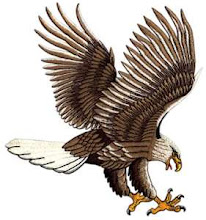

Ernest Edwin Evans was born August 13, 1908. He was 3/4 Cherokee Indian. Prior to his Naval Service he attended and graduated from Muskogee Central High School, Muskogee, Oklahoma. He graduated U.S. Naval Academy in 1931.
In July 1943 Commander Evans was assigned as the Prospective Commanding Officer of the new Fletcher Class destroyer USS Johnston (DD 557) which was built, launched and commissioned at Seattle-Tacoma Shipbuilding Company in Seattle, Washington on October 27, 1943. Under Evans' command the crew saw their first combat a few months later during the Marshalls Campaign when Johnston bombarded the beaches of Kwajalein on February 1, 1944. In March the ship moved on to the Solomon Islands for more of the same. On May 15, 1944 while performing anti-submarine patrols off Bougainville Commander Evans attacked, depth-charged and sank the Japanese submarine I-16. Evans was awarded the Bronze Star for meritorious achievement in this action. On July 21, 1944 Johnston supported the Pearl Harbor veteran battleship USS Pennsylvania (BB 38) during her bombardment of Guam. By July 29th Johnston had hurled more than 4,000 5-inch shells at the beaches.
By September 1944 Johnston was assigned to Task Unit 32.7.2 of the Western Escort Carrier Task Group 32.7, screening the escort carriers Saginaw Bay, Kalinin Bay, and Petrof Bay for the invasion of the Palau Islands.
During the Battle of Leyte Gulf on October 25, 1944 Commander Evans and Johnston were assigned to Task Unit 77.4.3 AKA Taffy III with 2 other destroyers (Hoel and Heermann), 4 destroyer escorts (Butler, Dennis, Raymond, Roberts) and 6 escort carries (Fanshaw Bay, Saint Lo, Kalinin Bay, White Plains, Kitkun Bay, Gambier Bay). Here, at the Battle Off Samar, they fought the vastly superior Imperial Japanese Navy Centre Force which consisted of 4 battleships, 6 heavy cruisers, 2 light cruisers, and 11 destroyers.
Shortly after 7:00 AM when the Japanese fired upon the American Task Unit Commander Evans gave the order for Johnston to create funnel smoke and he turned his ship towards the swiftly advancing Japanese heavy cruiser line. Scoring several 5-inch gun hits on the lead cruiser he fired all 10 of Johnston's torpedoes and was credited with at least one hit on the first cruiser in line, the IJN heavy cruiser Kumano, effectively placing it out of action. At about 7:30 AM Johnston was hit by 3 14-inch battleship shells which destroyed her bridge. Seriously wounded, Commander Evans moved the Conn to the fantail of the ship where he gave rudder orders through an open hatch for the remainder of the battle. By 7:50 AM, with her speed reduced by the damage and all her torpedoes expended, Johnston supported Hoel, Heermann and Roberts with gunfire support during their torpedo attacks.
As the escort carriers fled southward the escort carrier Gambier Bay became incapacitated by naval gunfire. Around 8:30 AM upon sighting the helpless CVE Commander Evans gave the order for Johnston to fire upon the Japanese warships and draw their fire away from Gambier Bay. Shortly after 9:00 AM Commander Evans placed Johnston between a Japanese destroyer squadron and the escort carriers. Upon firing on the lead destroyer the entire column turned away. Not long after this last engagement Johnston became the focal point of heavy Japanese gunfire and was finally put out of action.
At 9:45 AM Commander Evans ordered his crew to abandon ship. Johnston sank at 10:10 AM, receiving a hand salute from the skipper of a Japanese destroyer. When Johnston sank Commander Evans was seen leaving the ship. He was never found with the group of survivors who spent nearly two days in the water awaiting rescue. He was posthumously awarded the Medal of Honor for his material contribution to the decisive victory won in Leyte Gulf and shared in the Presidential Unit Citation awarded his Task Unit for this action in which he gave his life. Originally he was awarded the Navy Cross for his action at Samar, it was later recalled and replaced by the Medal of Honor.
Medal of Honor Citation
Rank and organization: Commander, U.S. Navy. Born: 13 August 1908, Pawnee, Okla. Accredited to: Oklahoma. Other Navy awards: Navy Cross, Bronze Star Medal. Citation: For conspicuous gallantry and intrepidity at the risk of his life above and beyond the call of duty as commanding officer of the U.S.S. Johnston in action against major units of the enemy Japanese fleet during the battle off Samar on 25 October 1944. The first to lay a smokescreen and to open fire as an enemy task force, vastly superior in number, firepower and armor, rapidly approached. Comdr. Evans gallantly diverted the powerful blasts of hostile guns from the lightly armed and armored carriers under his protection, launching the first torpedo attack when the Johnston came under straddling Japanese shellfire. Undaunted by damage sustained under the terrific volume of fire, he unhesitatingly joined others of his group to provide fire support during subsequent torpedo attacks against the Japanese and, outshooting and outmaneuvering the enemy as he consistently interposed his vessel between the hostile fleet units and our carriers despite the crippling loss of engine power and communications with steering aft, shifted command to the fantail, shouted steering orders through an open hatch to men turning the rudder by hand and battled furiously until the Johnston, burning and shuddering from a mortal blow, lay dead in the water after 3 hours of fierce combat. Seriously wounded early in the engagement, Comdr. Evans, by his indomitable courage and brilliant professional skill, aided materially in turning back the enemy during a critical phase of the action. His valiant fighting spirit throughout this historic battle will venture as an inspiration to all who served with him.



No comments:
Post a Comment